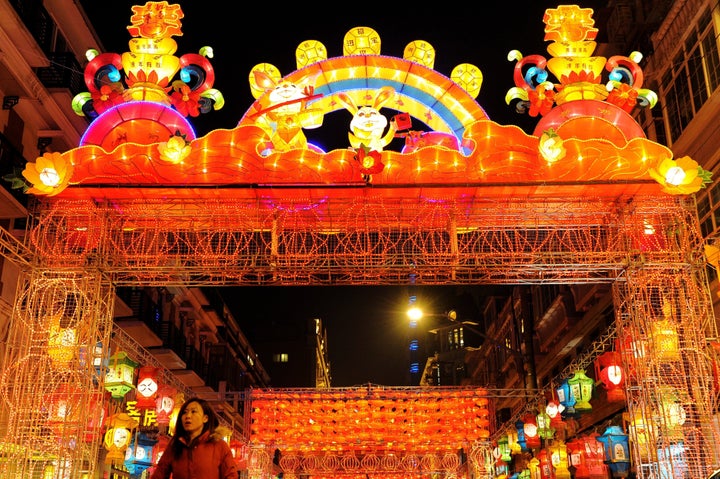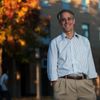
Next month, I'll be going to Toronto to take part in the Annual Meetings of the Association for Asian Studies, the organization whose flagship journal I edit. I'll be doing various things at this conference, all of which are likely to be interesting and many of which should also be enjoyable, as they will involve seeing old friends and longtime colleagues. But only one of my activities will have a man-bites-dog sort of newsworthiness. This is chairing a panel whose other participants are:
1) A man coming from London who has written widely on Japan's economy;2) A woman coming from California who used to edit a UCLA publication on Asia;3) A woman coming from Thailand who has published a well-reviewed book based partly on archival work on Burma's colonial period;4) A man coming from Hanoi who has been writing on Vietnamese politics;5) A woman coming from Beijing who has been doing in-depth interviews with urban Chinese from varied walks of life.
What's so unusual about this line-up?
Well, the geographical range involved is striking. The AAS meetings are robustly international gatherings, in terms of where people come from and the places they study, but it's still relatively rare to find a panel with people based on more than two continents and focusing on more than three nations. What really sets this panel apart from most on the program, though, is something else. Nearly all participants in AAS panels hold a doctorate or are in the process of working toward getting one, but on this one, which will be called "Reporting on Asia," I'll be the only one who fits into that category. The others will all be journalists. They are Emma Larkin (author of Finding George Orwell in Burma); Dominic Ziegler (The Economist's Asia Editor); Angilee Shah (a freelance writer); John Ruwitch (a Reuters reporter); and Christina Larson (a contributing editor for Foreign Policy).
I suppose I should add that the five people I've just listed -- who will also be on a second panel, devoted to various forms of authoritarianism, in which they will be joined by another academic, AAS Vice-President-elect Thongchai Winichakul -- have something in common beyond the fact that all are journalists. Namely, all are adventurous journalists.
Not because of where they've gone on assignment in the past, but because of where they will be heading in March. After all, these five journalists have all agreed to venture into a world -- that of the scholarly conference -- that has its own distinctive customs and codes. As a result, most will surely find the Toronto hotel where the meetings will be held as exotic a locale as any to which they've gone to report. (The only one unlikely to find it a strange milieu is Shah, since she's a veteran of last year's AAS meetings, and due to the time she spent at UCLA, editing an online-only publication called AsiaMedia, she has more experience than the others with the curious ways of "Homo Academicus.")
The participation of journalists in this year's AAS meetings, as well as in other recent ones, is support by a generous grant from the Luce Foundation set aside for this purpose, as well as to fund attendance by Asia specialists from the policy world. This Luce funding, as well as support for related activities provided by the Ford Foundation and the Harvard-Yenching Institute, have been enlivening and enriching the AAS meetings by increasing the number of non-academics in attendance. This year, in addition to the journalists mentioned above, novelist Amitav Ghosh will be speaking, and several people active in Chinese NGOs appeared on one of last year's panels.
It is not a complete novelty for journalists to be included in panels at academic meetings. A few years ago, for example, I helped organize an American Historical Association session on the challenges and pay-offs for academic historians of writing books aimed at reaching broad audience. One of the participants was Jennifer Schuessler of the New York Times, who handled with aplomb a particularly challenging task: talking to a packed audience of scholars, which included many people who were miffed that their books should have been reviewed in the book section she helped edit, about the difficult task of picking a small number of titles out of thousands to be featured.
Still, it is surely rare, if not unprecedented, for a scholarly organization unrelated to journalism to make the kind of extended effort AAS has been making to bring a clutch of "ink-stained wretches" (to use a term some of reporters I know use to refer to members of their guild) into regular contact with academics. So far at least, I'm happy to report, it has been a successful experiment, with the journalists and scholars both feeling enriched by the mingling of worlds.
Actually, rather than a mingling of worlds, a mingling of "two cultures" might be the best way to put it. In his classic book titled The Two Cultures, C.P. Snow wrote that a "gulf of mutual incomprehension" had come to divide two types of people, who would seem to have some basic things in common. He was thinking of "humanists" and "scientists," but in the present moment, some of his phrases work at least as well for "professors" and "journalists." This is true despite the fact that there are professors who write for newspapers and magazines. It is true even though some journalists do research that has much in common with that conducted by academic historians or ethnographers. It is true despite the fact that asked to name the 20th century intellectuals they admire most, many professors in the humanities and social sciences would list George Orwell, who wrote novels, of course, but largely made his living as a journalist. And it is true even though many highly respected journalists are, well, professors--the faculty list for Berkeley includes Adam Hochschild, for Columbia Howard French, for UC Irvine Amy Wilentz, and so on.
The current "Two Cultures" divide is significant enough that some academics are leery of having journalists attend their gatherings. Similarly, more than a few journalists, if invited to attend an academic conference, would respond that they could think of better ways to spend a few days.
I understand both of these reactions. Many scholars have read and been annoyed by newspaper pieces that pull a few unusual sounding paper titles from the program of an MLA meeting and use these to poke fun at academic pretentiousness. Many journalists have read those same parodies of scholarly life, but instead of being outraged felt confirmed in their conviction that occupants of the Ivory Tower are best left alone to mumble in their strange languages to one another.
I am glad that these reactions did not prove insurmountable obstacles to launching the Luce initiative within AAS. Or getting suitably adventurous journalists to sign on--in some cases, enthusiastically, as Ziegler, for example, wrote that he was "delighted" to be invited to this year's meeting, since it would give him a chance to "interact with knowledgeable and insightful people" of the sort he often turns to for ideas or information in his work.
Academics need space to just talk to other academics, and that is still, fittingly, what will happen during most sessions in Toronto. Still, the rituals of every community, including that of Homo Academicus, can benefit from the infusion of new participants. They are likely both to bring fresh ideas and novel ways of behaving into the host culture's gathering and to leave with a better appreciation for what those on the other side of a divide are really like.
